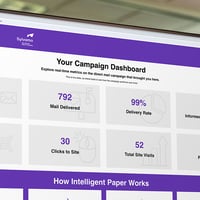Digital Dish: August 2019
Each dish features a new nugget to chew on and fuel your digital cravings. This month's edition discusses book printing and converting on high-speed inkjet presses versus traditional offset presses and feeds you with suggestions to ensure the final book product is produced without major issues.
1. Do Your Homework
Before taking a book to print, it's important to cross your t's and dot your i's to ensure a smooth production. Work with the author, designers and others involved in the development of the project on the front end to ensure copy has been proofed for errors and files have been set up properly. You'll also want to determine how the book will be bound at the beginning of the project, as this decision will impact the layout and design of the piece. For example, if perfect binding is used and the design spans a two-page spread, it's important to proof to ensure it's aligned across both pages in order to see the nuances of the design. Other bindery options to consider are saddle stitching, stapling and spiral bound.
2. Choose the Right Paper
Once you're ready to go to press on a high-speed inkjet device, it's important to choose the right paper. Using a slightly heavier basis weight of paper with high opacity will help prevent show-through in two-sided printing, which can be distracting to readers. When printing offset, there is typically less show-through due to the inks used, whereas inkjet inks contain higher water content that penetrates into the paper at varying amounts depending on the substrate (coated vs. treated vs. untreated). Using either a treated sheet or coated sheet helps prevent inks from penetrating too far into the sheet, but keep in mind that some inkjet presses experience issues running a coated sheet. Untreated stock can be run on an inkjet press, but we recommend using an on-press primer or bonding agent to keep inks on the surface.
3. Test and Assess
Once you're ready to go to press on a high-speed inkjet device, it's important to choose the right paper. Using a slightly heavier basis weight of paper with high opacity will help prevent show-through in two-sided printing, which can be distracting to readers. When printing offset, there is typically less show-through due to the inks used, whereas inkjet inks contain higher water content that penetrates into the paper at varying amounts depending on the substrate (coated vs. treated vs. untreated). Using either a treated sheet or coated sheet helps prevent inks from penetrating too far into the sheet, but keep in mind that some inkjet presses experience issues running a coated sheet. Untreated stock can be run on an inkjet press, but we recommend using an on-press primer or bonding agent to keep inks on the surface.
Bring Stories to Life with AR!
This month's issue in our Did You Know series is about Immersive Storytelling and how to incorporate augmented reality into print. Use your printed book materials to tell an even bigger, more engaging story, through the use of AR. We even created our own AR children's book, Apollo the Spacedog,which follows Andi and her adopted dog, Apollo, as they travel through the galaxy. Download your very own copy of this DYK and reserve your copy of Apollo the Spacedog today!





